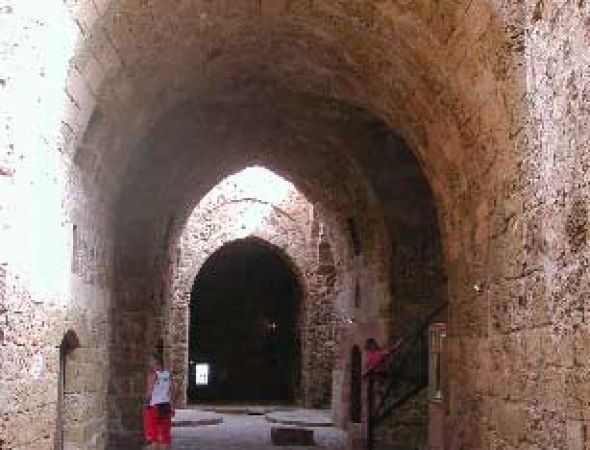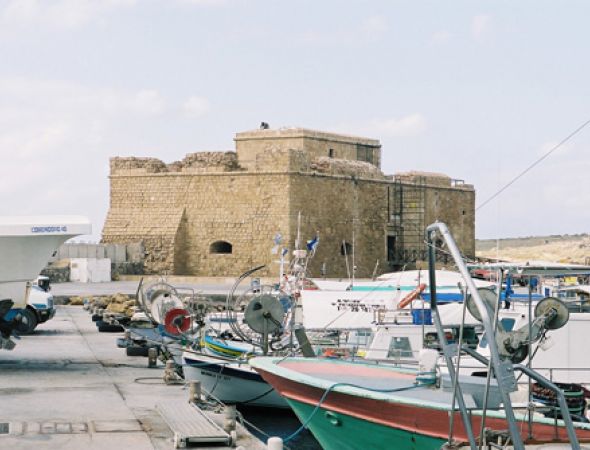![]() +357 24 828 100
+357 24 828 100
![]() +357 24 828 100
+357 24 828 100
The small castle of Pafos stands on the ancient mole in the western part of the town's port. Its characteristics today are the result of various interventions. The Frankish rulers built the castle in the middle of the 13th century in order to replace the Byzantine fort of ‘Saranta Kolones” which was destroyed after the earthquake of 1222 A.D. It seems that the Frankish rulers originally erected two towers: the castle at the port and a circular tower, traces of which can be seen 50 metres west of the existing tower. A curtain wall interconnected these two towers. When the Genoese captured the towers in 1373 A.D. they made some changes and also shaped its moat. According to some medieval chronographers, both towers were in use in the 15th century. Towards the end of the century however, a strong earthquake destroyed one of the two towers. Just before the Ottoman conquest of 1570, the Venetians, who controlled Cyprus at that time, destroyed what was left of the two towers with the use of explosives, so that the towers wouldn’t be used by the Ottomans. What survives today is the 1780 Ottoman restoration of the western Frankish tower with its Venetian additions. An inscription above the only entrance of the castle bears witness to this restoration.
The ground floor consists of a central hall with small rooms on each of its two long sides, which were used as prison cells during the period of the Ottoman occupation. Two small underground cells were used for the imprisonment of long-term convicts. The small Turkish garrison lived in the upper floor rooms and used the central room as a mosque. On the roof of the castle there are twelve battlements, which received a corresponding number of cannons. The Ottomans removed the canons in 1878, when they handed over the administration of the island to the British. From the beginning of British rule the castle was used as a salt store until 1935 when, under the Antiquities Law, it was declared an Ancient Monument. Since then, the castle has been restored and is protected by the Department of Antiquities.
Accessibility: No wheelchair accessible

